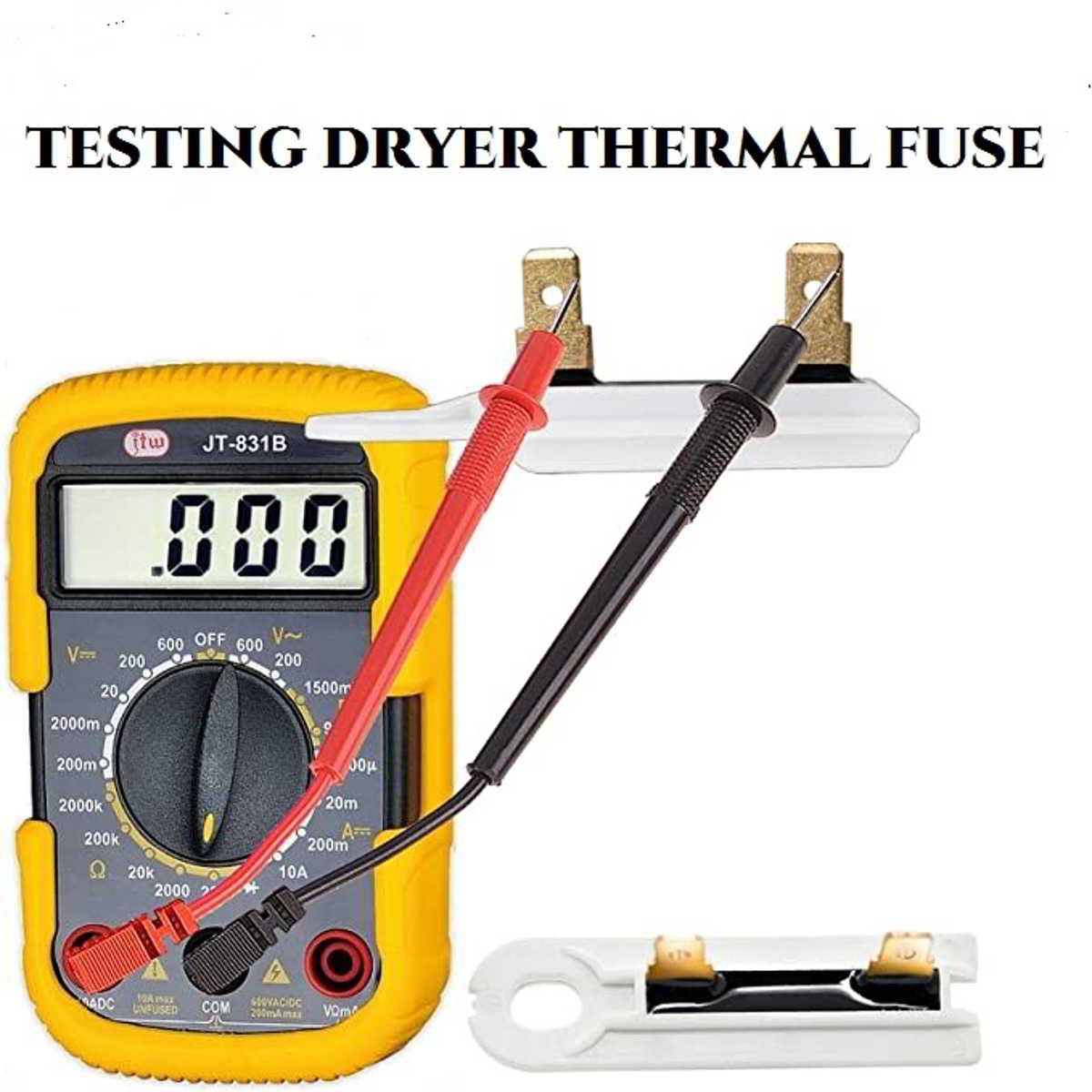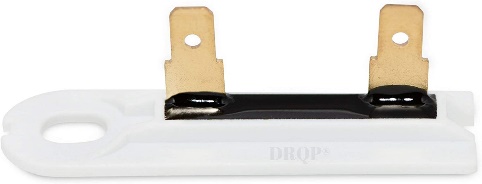As an Amazon affiliate, we earn a commision from qualifying purchases.
The thermal fuse is a common culprit if your dryer won’t start or starts but won’t heat properly.
And since the part needs to be replaced(it can’t be reset), you might want to test it to make sure it has gone out.
So below is how to test thermal fuse on dryer (step by step)
How to test thermal fuse on dryer
To test a thermal fuse, you will need to do a continuity test…
For starters, a continuity test is used to determine if there is a continuous electrical path in an electrical gadget.
Now, if there is continuity, then your gadget, in this case the thermal fuse, is functioning properly and vice versa.
Before we start, here is what I will take you through with regards to testing thermal fuses in a dryer.
- How to remove thermal fuse from the dryer.
- How do you test a thermal fuse on a dryer
- How to test a thermal fuse without a multimeter.
- Frequently asked questions on thermal fuse testing.
In addition, we shall look at how to replace a dryer’s thermal fuse.
Let’s dive in..
How to remove thermal fuse from the dryer
If you have already removed your thermal fuse, you might consider jumping to the next part below.
Otherwise, follow these steps to remove the part:
- Disconnect your dryer from the power source. If you have a gas dryer, also disconnect it from the gas supply.
- Disconnect the dryer’s venting system from the house’s venting system.
- Pull your dryer a couple of inches away from the wall.
- Using a screwdriver, unscrew the nuts on the dryer’s back panel and set aside the back panel.
- Locate your thermal fuse. To remove it, carefully disconnect the wires it is connected to.
- Now, proceed to the next section (how to test a dryer thermal fuse).
How to test dryer thermal fuse using a digital multimeter
As I had told you earlier, a common way of testing the part is by doing a continuity test using a multimeter.
Here’s how you do it:
- If you are using a digital multimeter that has a continuity option, turn the setting to that option (on some multimeters, this setting is also called resistance with tone).
- Next, touch the probes of your multimeter to the terminals of your thermal fuse. If the fuse is good, your multimeter will beep. If the fuse is faulty, your multimeter will not make any sound.
On the other hand, if you are using a digital multimeter that lacks the continuity option, you can use the ohm setting to do a continuity test.
Now, if your multimeter is an auto-ranging multimeter, just turn it to the ohm setting. However, if yours is a manual ranging multimeter, set it to the lowest ohm setting.
Next, touch the probes together and mark the reading that you get – it should be 0 or really close to 0. For purposes of remembering, let us call this reading X.
You can now touch the probes to the terminals of your fuse. If your fuse has continuity, you should get a reading that is either X or close to X.
On the other hand, if the display on the multimeter does not change or your ohm reading is far from reading X, then, you have a faulty thermal fuse.
How to test a thermal fuse on dryer using an analog multimeter
- First, select the lowest ohms of resistance setting by rotating the range selection dial.
- Next, you will need to calibrate the multimeter. To do this, touch the probes together and adjust the needle to read 0. To do this, rotate the knob on the side of your multimeter.
- Now, touch the probes to the terminals of your thermal fuse.
If you get a reading of 0, then, your thermal fuse is good. On the other hand, if the needle does not move or gives any other reading, then it is faulty and will need to be replaced.
How to test thermal fuse on dryer without a multimeter
You can also test a thermal fuse without using a multimeter.
Steps:
To do this, use a thin wire to connect the two terminals together.
Next, plug in your dryer.
If it heats, then the thermal fuse is damaged. However, if the dryer does not heat, the thermal fuse is still good and something else is at fault for your dryer problems.
Side note: never leave your thermal fuse bypassed. This is because it is a protection device that not only protects the dryer but it also protects you from a fire that can be caused by the dryer.
How to replace a thermal fuse
If your test proved that your fuse is damaged, you will need to get a replacement (most are packed two so you’ll have a spare/backup in case it goes out again).
As regards installing the new one, simply connect the wires we had previously disconnected from the damaged fuse and reassemble your dryer by following the steps outlined above.
What causes a thermal fuse to blow
If your thermal fuse was damaged and you replaced it, you definitely do not want to keep on replacing it.
You see, the thermal fuse is a protective device that is designed to protect your dryer from overheating as this may cause a fire.
Now, below are the reasons that cause your thermal fuse to blow. Therefore, make sure to check on them before you reassemble your dryer.
Clogged vent
This is usually the key cause of a blown thermal fuse.
So after replacing the fuse, make sure to clean the ventilation system in your dryer and also the one running through your house.
Also, regularly clean them(A good rule of thumb is to clean the ventilation system once or twice per year).
Shorted heating element
If your thermal cut-off fuse was blown, you should check on your heating element to make sure that it is not overheating.
How to test thermal fuse on dryer – Frequently Asked Questions (FAQs)
Which is the best way to test a dryer’s thermal fuse?
We recommend that you use a multimeter – digital or analog – to test your thermal fuse.
Using a wire may lead to your dryer catching fire which may even spread to your house depending on the location of your dryer.
Which is the best multimeter to test a dryer’s thermal fuse?
We recommend the AstroAI multimeter used by most professionals. It is also great for all your DIY needs.
ALSO READ:
Your GE front load dryer not starting? Try this
LG dryer won’t turn off [Fixed!]
Amana dryer not turning on [Probable Fixes!]
LG dryer stops before clothes are dry [Fixed!]
LG dryer won’t turn on [Fixed!]


